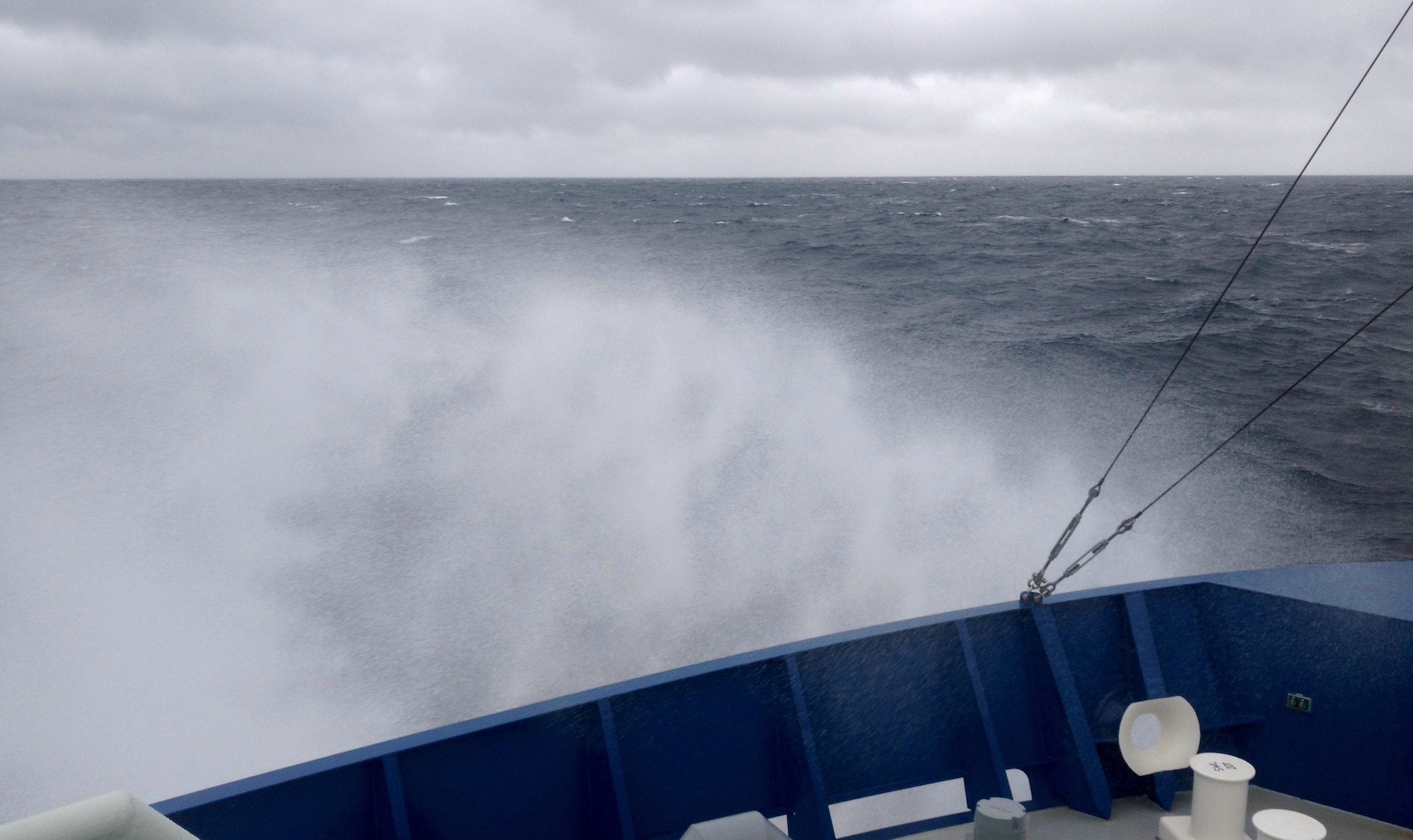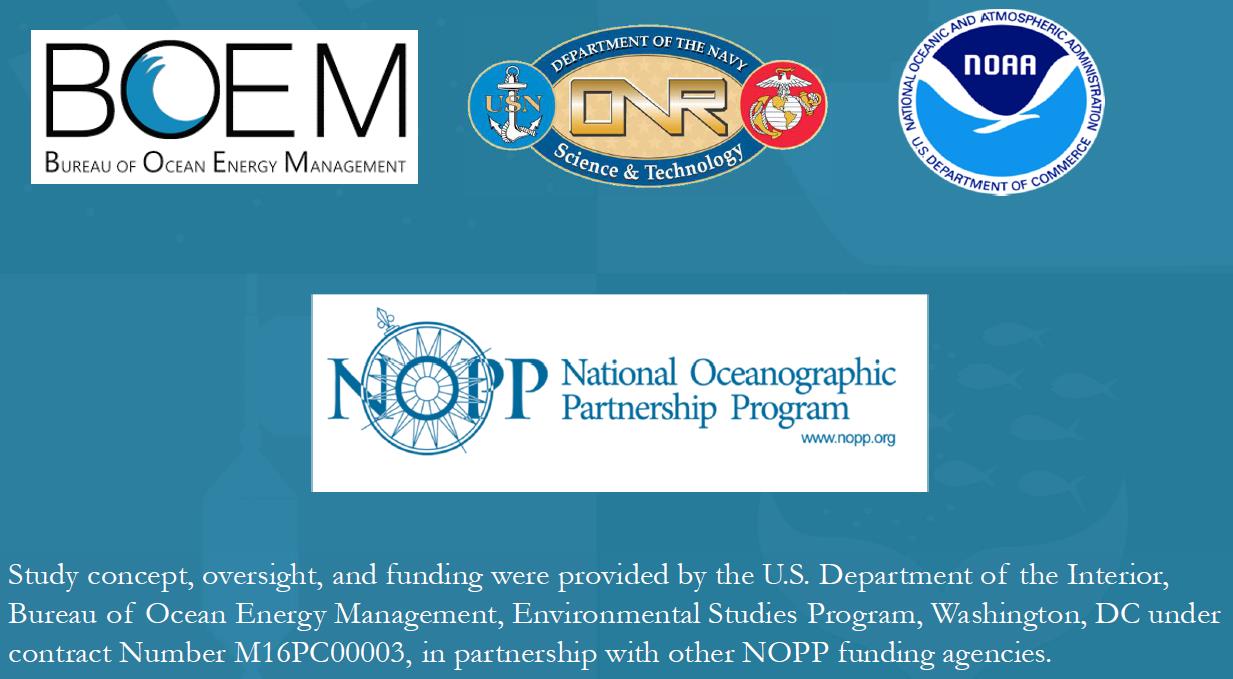Written by Calder Robinson, undergraduate at Dalhousie University, Halifax Nova Scotia.
The wind is blowing Beaufort Six, and the ship is beating into it on this leg of our fine scale acoustic survey of the waters off of Cape Hatteras. The ocean, warmed by the Gulf Stream current to more than 10 degrees C higher than the air, steams slightly, sharing its warmth with the entire eastern seaboard of the US; billions of joules of thermal energy moving from the ocean into the atmosphere each instant. Science aside, the fog is a nice aesthetic. Its seven A.M, and I'm beginning my marine mammal observation watch for the day. Grey skies and rain against the bridge windows; our closest neighbour is a container ship a few miles away,disappearing into the weather. We are alone.
A half hour passes, another, nothing but wind, waves and whitecaps. The water is a grey green; empty of everything but phytoplankton, three ghostly shapes swim by, gone, just empty grey green water. I didn't quite believe it. I made a note and moved on. The end of my shift arrives, the lookout pointed forward silently, more of them, five or six lazily surfing the waves and diving them around the bow. Dolphins. We weren't really alone.
Shifts continued down in the main lab, logging interesting echoes as they came up on the variety of sonar bands we were using to peer into the deep. Changes in bottom formations, mid water schools of fish (a cloud of upside down crescents on the screens), aggregations of krill, salpes and others in the water column; a striking amount of life in an otherwise empty, slate grey world.



